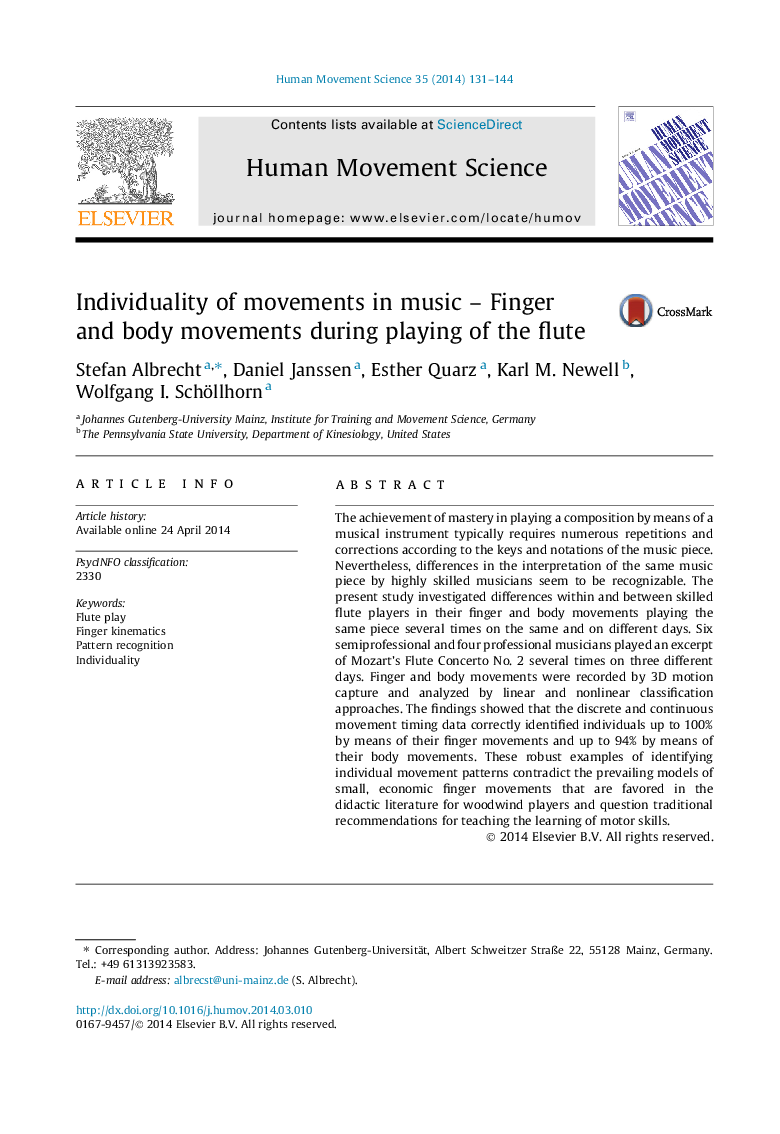| Article ID | Journal | Published Year | Pages | File Type |
|---|---|---|---|---|
| 928314 | Human Movement Science | 2014 | 14 Pages |
•We investigated differences within and between skilled flute players.•Finger and body movements were analyzed by exploratory and confirmatory approaches.•Individuals were identified up to 100% by means of their finger and body movements.•The finger movement strategies contradict the prevailing models of small, economic movements.
The achievement of mastery in playing a composition by means of a musical instrument typically requires numerous repetitions and corrections according to the keys and notations of the music piece. Nevertheless, differences in the interpretation of the same music piece by highly skilled musicians seem to be recognizable. The present study investigated differences within and between skilled flute players in their finger and body movements playing the same piece several times on the same and on different days. Six semiprofessional and four professional musicians played an excerpt of Mozart’s Flute Concerto No. 2 several times on three different days. Finger and body movements were recorded by 3D motion capture and analyzed by linear and nonlinear classification approaches. The findings showed that the discrete and continuous movement timing data correctly identified individuals up to 100% by means of their finger movements and up to 94% by means of their body movements. These robust examples of identifying individual movement patterns contradict the prevailing models of small, economic finger movements that are favored in the didactic literature for woodwind players and question traditional recommendations for teaching the learning of motor skills.
